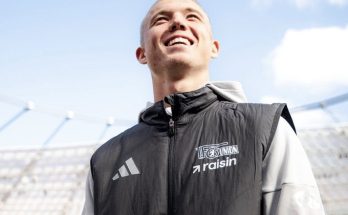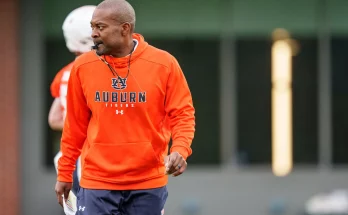From Station Camp to the Show: Chase Burns Shines as Cincinnati Reds Starting Pitcher in Speedway Classic at Bristol, Tracing a Bold Path Through Tennessee Volunteers and Wake Forest
Chase Burns, once a local high school standout from Station Camp and Beech, has officially arrived on one of Major League Baseball’s biggest stages, taking the mound as the starting pitcher for the Cincinnati Reds in the highly anticipated Speedway Classic at Bristol Motor Speedway. In what can only be described as a full-circle moment for the young ace, Burns’ journey from Tennessee high school phenom to MLB starter has captured the attention of fans across the country. His path—marked by notable stints with the Tennessee Volunteers and Wake Forest Demon Deacons—reflects not only raw talent but a relentless drive to evolve, improve, and rise above every challenge that has come his way.
The Speedway Classic, a unique showcase of baseball played in the historic confines of the repurposed Bristol Motor Speedway, has become one of the sport’s most talked-about special events. For Chase Burns, pitching in this nationally spotlighted game isn’t just another start—it’s a symbolic return to his roots, a tribute to the Tennessee soil where his career first began to flourish. With a fastball that routinely touches triple digits and a mound presence that belies his age, Burns’ appearance at the Speedway Classic is not just a personal milestone but a moment of pride for those who have followed his journey from day one.
Burns’ baseball story began in Gallatin, Tennessee, where he developed his game on the high school diamonds of Station Camp and Beech Senior High Schools. It didn’t take long for coaches and scouts to take notice of the tall right-hander’s electric arm. Even in his teenage years, Burns displayed a mix of velocity, command, and competitive fire that signaled professional potential. He was already throwing with college-level precision before most of his peers were learning how to control their breaking balls. His performances turned heads not only locally but across the region, setting him up for a collegiate career that would solidify his standing as one of the nation’s premier young pitchers.
The University of Tennessee Volunteers offered Burns his first major stage. As a freshman in Knoxville, he quickly became a key figure in the Vols’ rotation. Burns was instrumental in helping Tennessee rise to national prominence in college baseball, known for their brash swagger, powerful bats, and dominant pitching staff. During his time in orange and white, Burns delivered high-intensity starts that showcased his blazing fastball, sharp slider, and growing maturity as a pitcher. He embodied the Volunteers’ aggressive, no-nonsense style of play and contributed significantly to their deep postseason runs.
Despite his success at Tennessee, Burns made the surprising decision to transfer to Wake Forest for the next chapter of his college career. For some, it was a risky move—leaving an SEC powerhouse for a program still building its national reputation. But for Burns, it was a strategic choice. Wake Forest had developed a reputation for cutting-edge pitching development, and Burns sought refinement. He wanted more than raw power; he wanted precision, pitch diversity, and the ability to command an entire game. At Wake Forest, under the guidance of advanced analytics and elite coaching, Burns transformed from a thrower into a true pitcher.
The results were immediate. At Wake Forest, Burns maintained his velocity but added new tools to his arsenal. His slider became sharper, his changeup more deceptive, and his ability to sequence pitches kept hitters consistently off-balance. Scouts across Major League Baseball began circling his name in their draft notebooks, noting not only his stuff but his poise and maturity on the mound. By the time he declared for the draft, there was little doubt Burns was ready for the next level.
Selected by the Cincinnati Reds, Burns entered a franchise with a rich history and a renewed focus on young talent. The Reds, known for cultivating high-upside arms, saw in Burns a pitcher who could anchor their rotation for years to come. He quickly climbed through the minor league system, facing each challenge with the same intensity and focus that had defined his early years. From Double-A to Triple-A, Burns remained dominant, striking out batters at a high rate and showing a level of polish that impressed coaches and front office personnel alike.
When the call finally came—his debut with the Cincinnati Reds—it was no surprise to those who had followed his development. Yet the decision to make his high-profile start at the Speedway Classic in Bristol carried special meaning. The game itself, played in a venue better known for NASCAR than for baseball, is a fusion of sports spectacle and hometown pride. For Burns, pitching in front of a home-state crowd just a few hours from where he honed his craft as a high school athlete added emotional depth to an already monumental occasion.
The game drew national coverage and local fanfare, with Tennessee baseball faithful flocking to see their former star on the professional stage. Burns did not disappoint. From his first pitch, he showed the composure of a seasoned veteran, carving up the opposing lineup with pinpoint control and overpowering stuff. His fastball exploded out of his hand, and his breaking pitches baffled hitters as they flailed at off-speed offerings that dropped like traps. Every strikeout was met with roaring approval from the Bristol crowd, many of whom had watched his evolution from Gallatin prodigy to MLB starter.
What makes Burns’ rise especially compelling is how grounded he has remained throughout his ascent. Teammates describe him as intensely focused but humble, a player who puts in the extra work and never takes success for granted. Coaches credit his willingness to learn and adapt, noting that his transformation from raw fireballer to cerebral pitcher sets him apart from others with similar physical gifts. Burns’ story isn’t one of overnight success but of years of dedication, adjustments, and an unyielding belief in his path.
Burns’ debut at the Speedway Classic marks more than a personal achievement—it represents a bridge between Tennessee baseball culture and the national spotlight of Major League Baseball. In many ways, Burns is a symbol of the region’s growing influence on America’s pastime, proving that elite talent can emerge from anywhere and flourish with the right mix of support, work ethic, and opportunity.
The impact of Burns’ journey also extends to the communities he once called home. Young athletes at Station Camp and Beech now see in him a tangible example of what’s possible. His story has sparked pride among local coaches, teammates, and fans, reminding them that the dream of reaching the majors is within reach for those willing to put in the work. Schools have hosted watch parties, and local sports programs have used his story as motivation, showing the next generation what’s possible through dedication and perseverance.
As the Cincinnati Reds look to build a winning future around their emerging core, Burns is poised to become a cornerstone of the franchise. His ceiling remains sky-high, and his hunger to compete at the highest level continues to drive him forward. Analysts have begun discussing his potential not just as a reliable starter but as a future All-Star and ace, someone capable of leading the Reds into postseason contention.
The Speedway Classic, with its one-of-a-kind atmosphere and local significance, may go down as one of the defining early moments in Chase Burns’ professional career. But it is clear that it is just the beginning. His journey, marked by calculated risks, growth through adversity, and unrelenting drive, is a testament to the athlete he has become and the person he continues to be. From the high school fields of Gallatin to the lights of Major League Baseball, Chase Burns has proven that greatness isn’t given—it’s earned pitch by pitch, season by season, with passion, grit, and heart.
In Chase Burns, the Reds have found not just a pitcher but a star in the making. And for Tennessee baseball fans, there’s a sense of pride in knowing that one of their own is leaving a mark on the game’s biggest stage—one fastball at a time.



